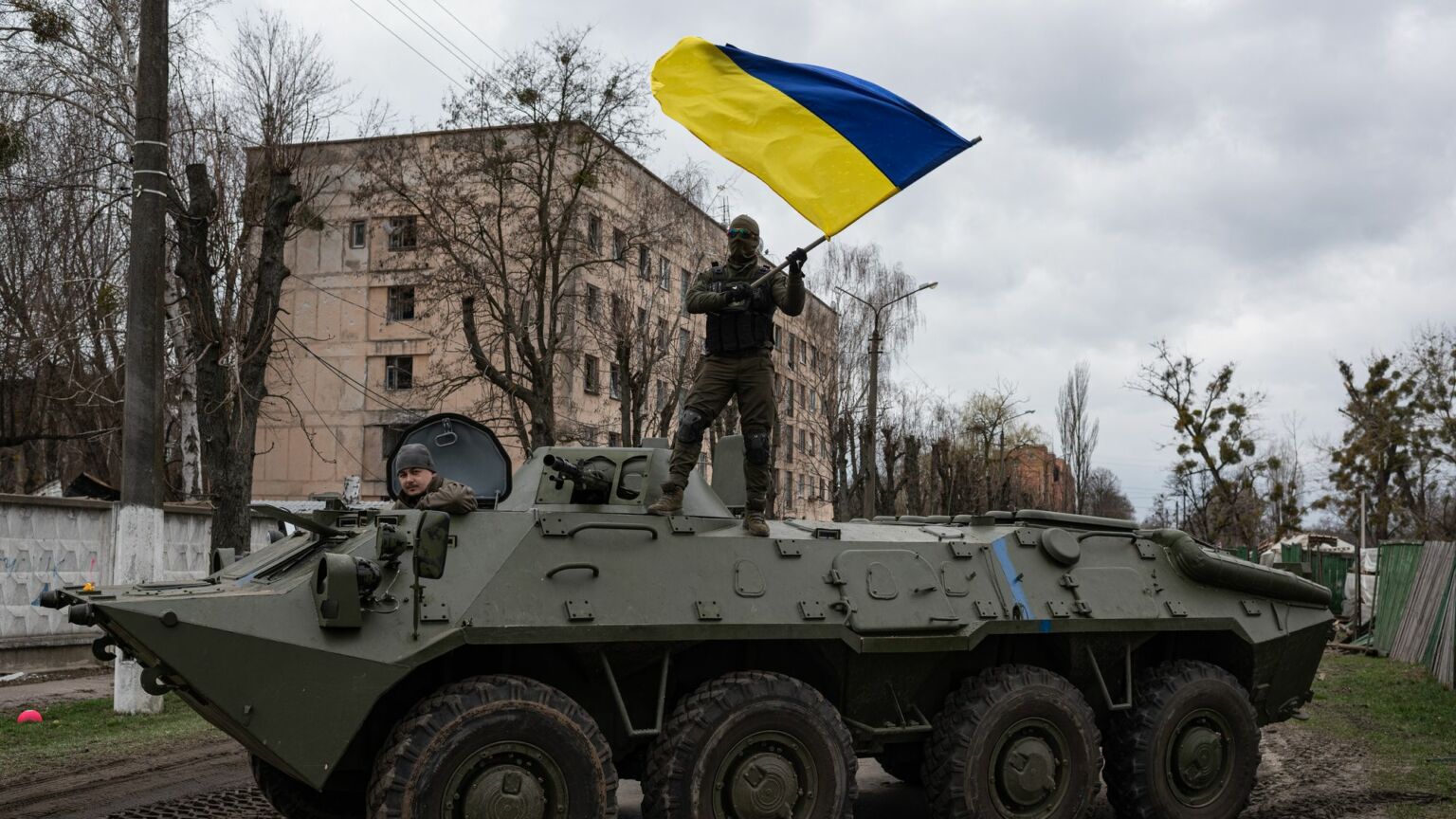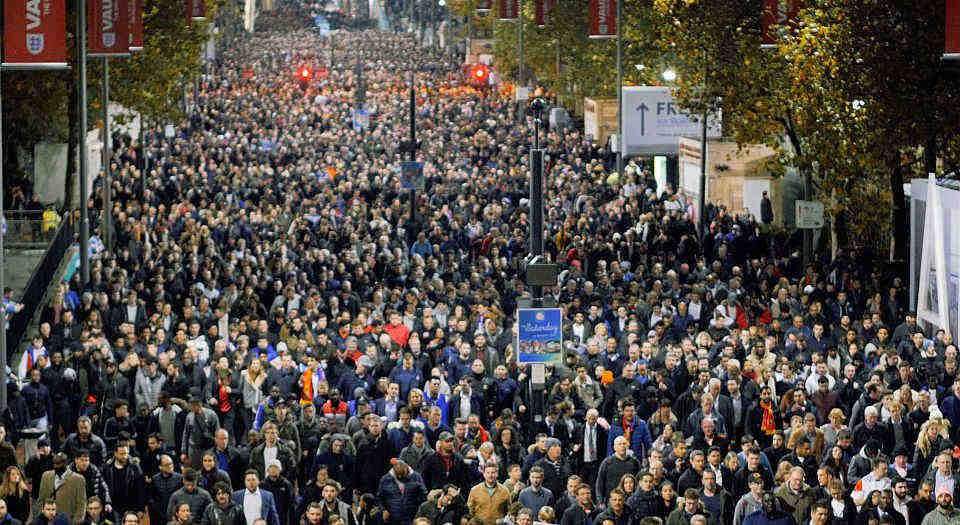Are Russians taking up arms for Ukraine?
A paramilitary raid on south-west Russia has exposed some of the weaknesses in Putin’s war effort.

Want to read spiked ad-free? Become a spiked supporter.
A curious thing happened in the Belgorod region of south-west Russia earlier this week. A group of armed fighters crossed from Ukraine into Russian territory and temporarily took control of several villages, before being repelled by Russian forces. It looks to have been a small, self-contained incident that is now over. Who these fighters were, why they were there and exactly what befell them, however, is much harder to establish. As are any longer-term implications.
As so often in wars, there are two quite different versions of events. According to Ukrainian officials, the group was made up of Russians belonging to groups known as the Liberty of Russia Legion and the Russian Volunteer Corps (RVC). Ukraine’s deputy defence minister, Hanna Maliar, said they were ‘Russian patriots who want to change the political regime in the country’. In other words, they were Russian ‘goodies’, pursuing a laudable aim to the best of their limited capabilities.
A spokesman for the Liberty of Russia Legion tweeted on Monday that his group had ‘completely liberated’ Kozinka, a town on the border, that its units had reached the town of Grayvoron, further east, and that its objective was to ‘liberate the Belgorod region’. The following day, the RVC posted a video showing its fighters advancing on a border post, saying they still had control of a ‘small, but our own, piece of the motherland’.
The Russian version is that the armed groups were ‘terrorist’ bands, made up of Ukrainians, not Russians, and were an official part of Ukraine’s war effort. The defence ministry in Moscow described the group as a ‘unit of the Ukrainian nationalist formation’ and accused it of shelling the border checkpoint at Kozinka and the surrounding areas. Russia also said the incursion had been swiftly routed, through artillery and air strikes, with as many as 70 fighters killed and the rest being pushed back behind the Ukrainian border.
Villagers who had been evacuated were able to return to their homes within 48 hours, when special terrorism regulations – which had imposed curbs on communications and movement – were lifted. Regrettably, according to the regional governor, one civilian was killed and another seriously injured. The Kyiv government has denied any involvement.
Reading between the lines, a reasonable summation might be that the Russian federal and Belgorod regional authorities were surprised by a cross-border incursion that was bigger and better organised than previous attempts have been (the RVC has also claimed responsibility for a raid in the neighbouring Bryansk region in March). But like the previous attempts, it was still short-lived.
As to who was responsible, it is hardly unprecedented for exiled patriots and their sympathisers to aspire to change power in their home country. But the idea of replacing Vladimir Putin’s regime – for the moment, at least – seems fanciful in the extreme. And if you ask who such raids benefit, then the answer has to be Ukraine – whether or not Kyiv was aware of what was happening. The effect of the raid has been to expose the vulnerability of the border – and thus the inadequate reach of Russian power. As with the drones that flew over the Kremlin earlier this month, that is not a good look for the Russian government, whoever was ultimately responsible. Whether the fierceness of Russia’s response, and the apparent scale of the losses, will deter future incursions seems unlikely.
If you discount changing power in the Kremlin as an aim, was there any further purpose to the raid, beyond tweaking the tiger’s tail? It is possible that there was. Both the Liberty of Russia Legion and the RVC told the Ukrainian public broadcaster that they were creating ‘a demilitarised zone on the border with the Russian Federation from which they will not be able to shell Ukraine’. That would appear to cast the operation as part of an attempt to protect Ukraine’s second city, Kharkiv, which is only around 50km (30 miles) from the border and has been subject to intermittent air attacks by Russia. How effective such a zone might be, however, must be doubtful, given the range of airpower at Russia’s disposal. Others have suggested that the incursion might have been a diversionary attack in advance of Ukraine’s much-trailed counter-offensive.
Another question might be whether these – and maybe other – paramilitary groups have any territorial ambitions of their own, or perhaps on Kyiv’s behalf. The border in this area was fluid even after the collapse of the Soviet Union and after Ukrainian independence, in the sense that people crossed it with minimal to no formalities. Is the border vanishing again? Or might these paramilitaries seek to spearhead a landgrab by Ukraine? Perhaps it could try to trade this territory for the return of some of the Ukrainian land occupied by Russia? The idea might be attractive, but it is probably unrealistic. Russia would resist to the hilt.
There are downsides to this sort of action, too. While there may have been no actual authorisation, or even knowledge, on the part of the Kyiv government, might the Ukrainian intelligence services have played a role or known about the plans? They have, after all, shown themselves less averse to risk than the Kyiv government in the past.
One risk is that these kinds of raids could displease Ukraine’s Western allies. The West has been very clear that the weapons and equipment it supplies should not be used to strike inside Russia. Yet verified footage shows American-made Humvees and MRAP vehicles at a Russian border checkpoint in Belgorod, shortly following the incursion. US officials have similarly taken a dim view of the assassinations of high-profile figures inside Russia. They also reportedly deterred a mooted plan to fly drones near the Kremlin on the anniversary of the invasion. What happens in Russian-occupied territory is another matter, but there is no ambiguity about the Belgorod region – it is inside Russia proper.
And this is the other downside: any incursions into Russia, however small or deniable, will be seized on by the Kremlin to try to argue that Russia is ‘under attack’ from Ukraine, and that its war is defensive. So, while such raids might have some short-term benefit for Ukraine, in the longer-term, they could prove counterproductive.
Although such incursions into Russian territory may be limited for now, there is no doubt that the war is spilling beyond Ukraine’s borders.
Mary Dejevsky is a writer and broadcaster. She was Moscow correspondent for The Times between 1988 and 1992. She has also been a correspondent from Paris, Washington and China.
Picture by: Getty.
Who funds spiked? You do
We are funded by you. And in this era of cancel culture and advertiser boycotts, we rely on your donations more than ever. Seventy per cent of our revenue comes from our readers’ donations – the vast majority giving just £5 per month. If you make a regular donation – of £5 a month or £50 a year – you can become a and enjoy:
–Ad-free reading
–Exclusive events
–Access to our comments section
It’s the best way to keep spiked going – and growing. Thank you!









Comments
Want to join the conversation?
Only spiked supporters and patrons, who donate regularly to us, can comment on our articles.